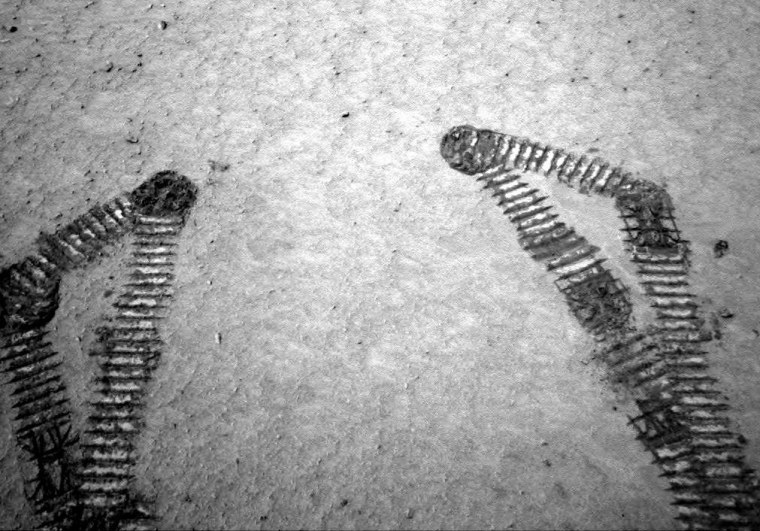The Opportunity rover used its robotic arm to inspect a freshly dug hole on Mars, while its twin, Spirit, rolled into a shallow depression halfway around the Red Planet, NASA said Wednesday.
Opportunity examined the 4-inch-deep (10-centimeter-deep) trench it scooped out with one of its six wheels, measuring the composition of the clumpy soil and photographing it with a microscopic imager.
The trench is intriguing because it is not uniform, with the bottom appearing different from the walls, project manager Richard Cook said. Scientists chose the trench site because earlier observations revealed it is rich in hematite, an iron-bearing mineral that typically forms in water.
Measurements should reveal whether the mineral is limited to the surface or present throughout the soil. Scientists could also turn up evidence of other minerals that might point to past water activity.

NASA sent the two rovers on an $820 million mission to search for geologic evidence that the largely dry and frozen Mars was once a wetter place hospitable to life.
On the other side of the planet, Spirit passed the halfway mark of its planned 90-day mission. Spirit rolled into a shallow depression, nicknamed Laguna Hollow, after completing a 63-foot (19-meter) drive. The dust-filled depression is probably an impact crater.
NASA is sending Spirit on a trek to a larger crater about 500 feet (150 meters) away. Spirit could reach the crater within a couple of weeks, depending on how many stops it makes to look around on the way there, Cook said.
Spirit and Opportunity both could last 180 days or longer, depending on the effects of the freeze-thaw cycles the spacecraft must endure each day. The rovers’ exteriors can range from a low of minus 139 degrees to a high of 50 degrees Fahrenheit. (-95 to 10 degrees Celsius).
